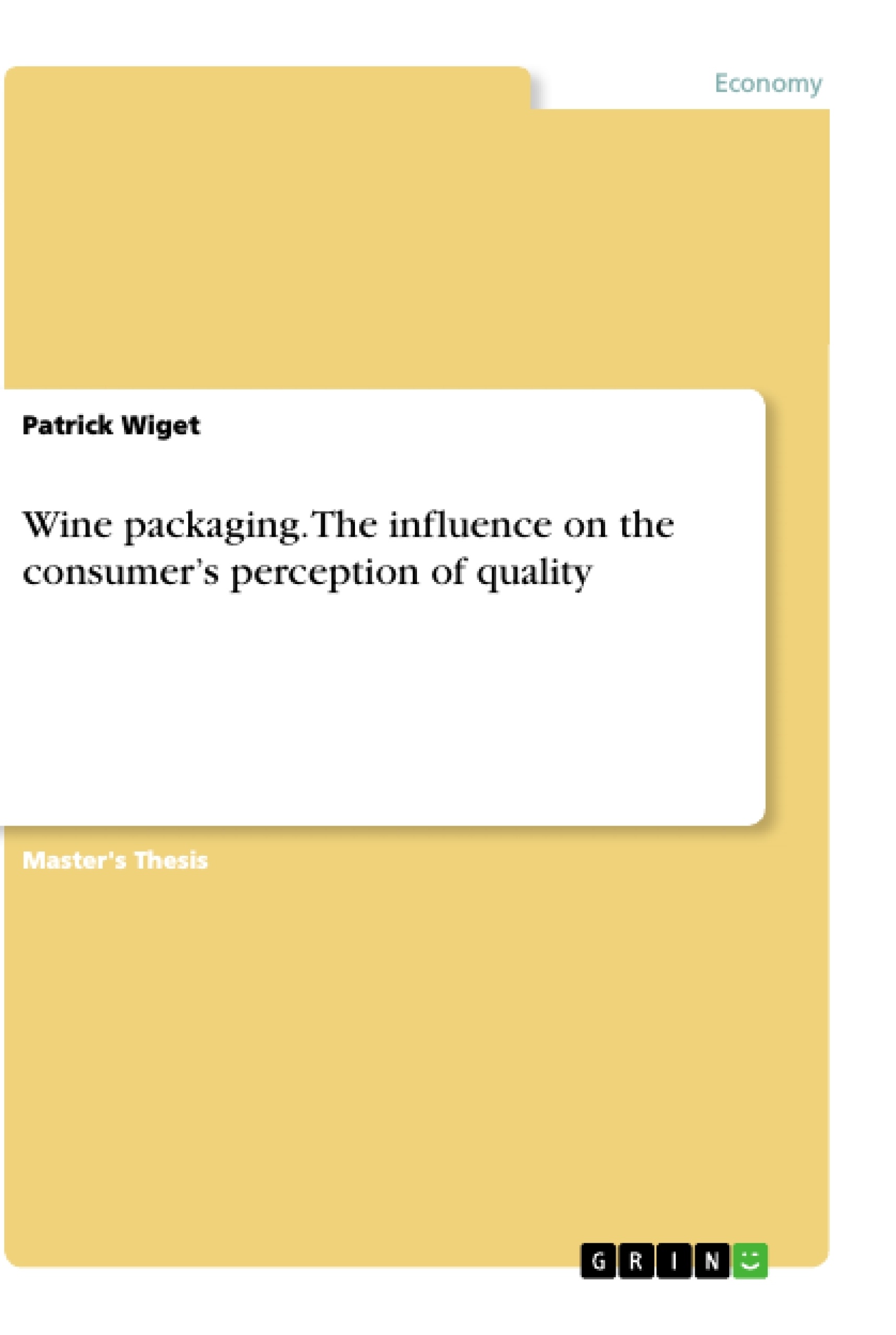In this exploratory dissertation the influence of wine packaging on the consumer’s perception of quality is examined. The focus of this dissertation will be the German Speaking part of Switzerland (GSP). For this research, wine in traditional glass bottles (0.75 liter) will be compared to wine from Bag-in-Box (BiB; 3 liter) in a qualitative research questionnaire in combination with a blind wine tasting and semi structured interviews.
The research will be reflecting the perception of the consumers in Switzerland, showing what kind of influence the packaging has on the consumer.
A multi method approach is applied 1) A white wine is filled from the Bag in Box into a traditional glass bottle. Afterwards the same wine was presented in a blind tasting, once in a covered bottle and once in the BiB, to a selected tasting panel that fills out a self-completion questionnaire, to see if the packaging has a direct influence on the perception of quality. 2) In addition, qualitative semi-structured interviews are conducted with people working in the wine industry to assess their perception in regards to the packaging. A manual database of categories was created, which has grown through a continuous comparison of data coding and concepts, based on the findings and arguments of the used literature.
Inhaltsverzeichnis (Table of Contents)
- Introduction and project overview
- Outline of the dissertation
- Historical evolution of wine packaging
- Overview of the Swiss wine market and its consumers
- Research objectives
- Research purpose and questions
- Review of literature
- Introduction
- What factors influence the consumer's perception of quality?
- Perception of quality of wine by the consumer
- The Influence of extrinsic and intrinsic packaging attributes
- The influence of quality schemes in Europe
- The influence of shelf life factors on quality
- Price and the cost driving factors
- How does the consumer's perception of quality effect the retailer?
- Wine and lifestyle factors
- Consumption: Ego driven
- Consumption: Wine with food
- Consumption: Casual drinking
- Consumption: Social and emotional reasoning
- Where do the interests of consumers and retailers align or differ?
- Perception and price
- Consumer segmentation
- Consumer targeting
- Findings
- Discussion
- Limitation
- Method
- Introduction
- Design elements
- Blind tasting
- Introduction & stimuli
- Participants blind tasting
- Experimental procedure blind tasting
- Data analysis of blind tasting
- Results of the blind tasting
- Semi structured interviews
- Introduction & stimuli
- Participants interviews
- Experimental procedure of interviews
- Data analysis interviews
- Results of the interviews
- Concluding thoughts
- Overall Conclusion
- Core results
- Implications
- Limitations
- Recommendations
- References
Zielsetzung und Themenschwerpunkte (Objectives and Key Themes)
This dissertation explores the influence of wine packaging on consumer perception of quality in the German-speaking region of Switzerland. It investigates whether wine presented in traditional glass bottles (0.75 liter) is perceived differently from wine presented in Bag-in-Box (BiB; 3 liter) packaging. The research aims to understand the impact of packaging on consumer perceptions and to identify how these perceptions are influenced by various factors including marketing, quality schemes, and shelf life. The key themes explored in this dissertation include:- Consumer perception of wine quality
- The influence of extrinsic and intrinsic packaging attributes
- The impact of quality schemes and shelf life factors
- The role of marketing and consumer segmentation in wine perception
- The relationship between consumer perceptions and retailer behavior
Zusammenfassung der Kapitel (Chapter Summaries)
- Introduction and project overview: This chapter provides an overview of the dissertation's focus, outlines the historical evolution of wine packaging, and introduces the Swiss wine market and its consumers. It defines the research objectives and questions.
- Review of literature: This chapter explores various factors that influence consumer perceptions of wine quality. These factors include the influence of extrinsic and intrinsic packaging attributes, quality schemes in Europe, shelf life factors, price, and lifestyle factors. It also examines how consumer perceptions of quality affect retailer behavior and explores the alignment and divergence of consumer and retailer interests.
- Method: This chapter outlines the research methodology employed in the dissertation. It describes the design elements, blind tasting procedures, and semi-structured interview process. It also presents the data analysis techniques used.
- Overall Conclusion: This chapter summarizes the core results of the dissertation, highlighting the key findings and implications of the research. It also discusses any limitations of the study and offers recommendations for future research and practical application.
Schlüsselwörter (Keywords)
This dissertation focuses on the interplay between wine quality perception, packaging, and consumer behavior in the Swiss wine market. Key concepts explored include wine quality perception, Bag-in-Box packaging, sensoric analysis, shelf life, lifestyle factors, sustainability, marketing strategies, and consumer segmentation. The study investigates the impact of these factors on consumer decisions and explores the influence of European quality schemes and industry practices on the perception of wine quality.- Quote paper
- Patrick Wiget (Author), 2020, Wine packaging. The influence on the consumer’s perception of quality, Munich, GRIN Verlag, https://www.grin.com/document/944158



